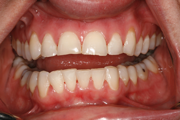Simplify the Worn Dentition Diagnosis Process
By Vivek Mehta on April 1, 2013 | 1 comment It is not always possible to clearly identify the cause of tooth wear. However, qualifying tooth wear, with all of the attributes noted in the adjacent diagram will always be possible.
It is not always possible to clearly identify the cause of tooth wear. However, qualifying tooth wear, with all of the attributes noted in the adjacent diagram will always be possible.
This analysis will help us narrow down our differential diagnosis. Also, during case presentation pointing out these patterns to patients will help them understand the problem a little better. When evaluating wear ask these four questions to help with diagnosis and management:
- Is there more wear on one arch than the other, or is it the same for both arches?
- Is there more wear on one side than the other?
- Is there a difference in wear for anterior teeth vs. posterior teeth?
- Is there more wear on certain aspects of the teeth surface? (e.g. Buccal, Lingual or both.)
Once you have figured out the answers to these questions, it's important to determine whether it is erosive destruction of tooth structure or the result of attrition?
Example 1: Lingual wear more than buccal wear.


Example 2: Anterior wear more than posterior wear.


Vivek Mehta DMD, FAGD, Visiting Faculty, Spear Education. Follow him on Twitter @Mehta_DMD.
Comments
April 4th, 2013